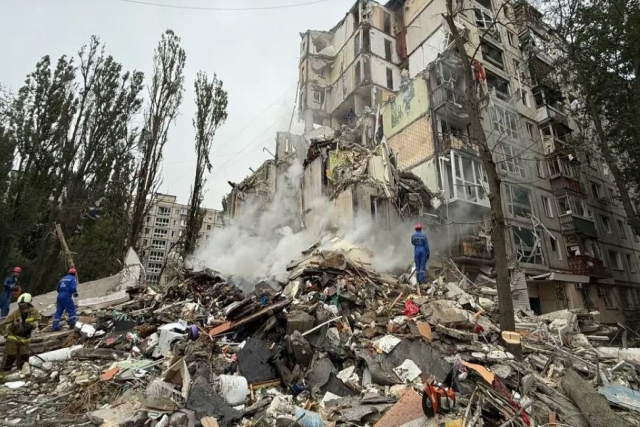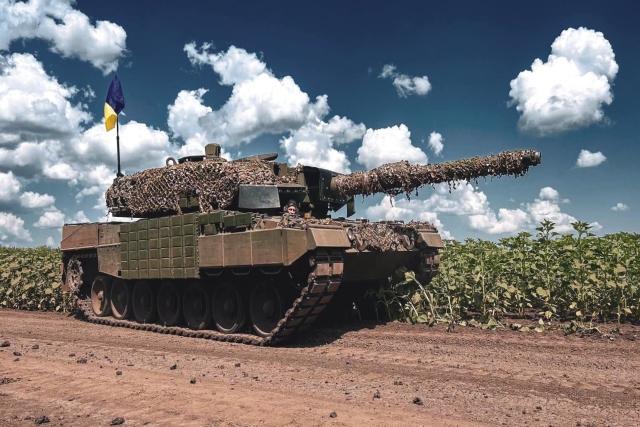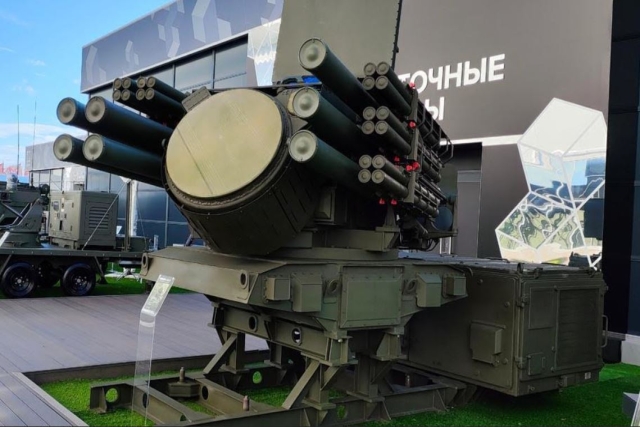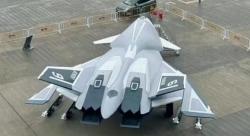Russia Used Jet-Powered Geran UAV in Deadliest Attack on Kyiv Killing 32, Injuring 135
Jet-propelled Shahed-type drones strike Ukrainian capital in major escalation of Russia’s drone warfare tactics

Russia carried out its deadliest drone assault on Kyiv to date, using jet-powered Geran drones—modified Shahed UAVs—in a massive overnight strike that killed at least 30 people and injured 135, Ukrainian officials reported.
President Volodymyr Zelensky confirmed that more than 300 drones and eight missiles were launched against Kyiv and other regions. Among the injured were 12 children and three police officers.
“This is the highest number of children injured in a single day since the start of the full-scale invasion,” Kyiv Mayor Vitali Klitschko said. The July 31 assault is now the second-deadliest on Kyiv after the December 2023 attack that killed 33.
Interior Minister Ihor Klymenko said jet-powered Shahed-type drones were used to target civilian and municipal infrastructure. “There is preliminary information that these were rocket-powered drones,” he said.
Rescuers continued searching through the night in the Sviatoshynskyi district, where some of the worst destruction occurred. A children’s hospital sustained damage, and more than 100 buildings, including homes, a mosque, and an educational institution, were affected citywide.
Kyiv has declared August 1 a Day of Mourning, with all entertainment events canceled and flags at half-mast.
“Russia’s response to peace efforts is more violence,” Zelensky said. “But all tools to compel Moscow to negotiate are in our partners’ hands.”
After the first wave of drones ended at 3:20 a.m., a renewed barrage began at 4:30 a.m., causing further destruction. Zelensky shared footage of damaged apartment blocks and trapped victims. No casualties were reported at the children’s hospital, though windows were blown out.
Ukrainian Railways confirmed disruptions but no injuries. The Islamic Cultural Center suffered damage from missile debris.
Jet-Powered Gerans: Russia's New Drone Tactic
The drones used are jet-powered variants of the Geran-2, a Russian-produced version of Iran’s Shahed-136, modified to fly faster, farther, and carry heavier warheads.
“These drones are highly dangerous,” Samuel Bendett, senior fellow at the Center for a New American Security, was quoted as saying by the Kyiv Independent. “They travel the same distance as a regular Geran, but in much less time. Russia has increased warhead size and improved flight capabilities.”
Ukraine’s military intelligence (HUR) confirmed the UAVs were upgraded Geran-2s, not the still-developing Geran-3. Acting HUR chief Oleh Chornyi said Russia plans to produce 4,000 of the upgraded drones by the end of 2025.
Specifications show the drone is 3.5 meters long, has a 3-meter wingspan, flies at 9,000 meters altitude, with a cruising speed of 520 km/h, and a flight time of around two hours, carrying a 50 kg warhead.
Ukraine’s air defense systems are reportedly struggling to counter nightly drone swarms. The emergence of faster jet-powered drones makes interception even harder.
“These weapons are evolving faster than Ukraine’s defenses,” said Taras Chmut, director of the military support group Come Back Alive.
Ukraine has turned to interceptor drones, with 10 models now in testing. Their effectiveness against rocket-powered Gerans is not yet known, though Bendett noted that “the principle remains the same: detect, track, and destroy.”
U.S. Response Tied to Drone Surge
The assault came after U.S. President Donald Trump warned Russia to end its war in 10 days or face new tariffs.
“Make no mistake, this is Putin’s response to President Trump’s deadline,” wrote Meaghan Mobbs, daughter of U.S. Special Envoy Keith Kellogg, on X.
Meanwhile, the U.S. Treasury Department’s OFAC imposed sanctions on five companies and one individual accused of supplying Iran’s drone program. Targets include entities in Iran, China, Hong Kong, Taiwan, and their intermediaries, linked to Iran’s HESA, which makes Shahed drones.
“Iran continues to pursue asymmetric weapon capabilities,” said John Hurley, Under Secretary for Terrorism and Financial Intelligence.













